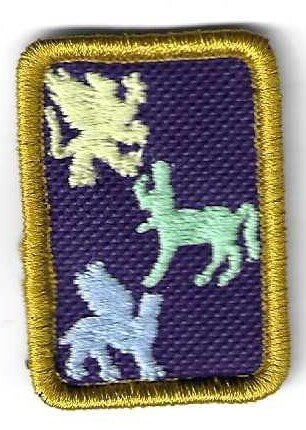Mythical Creatures--Ella J Embroidery
Requirements:
CSA: Complete 12
Junior: Complete 10
Brownie/Daisy: Complete 8
Have you ever imagined or created your own mythical creature?
1) Together with your group brainstorm of all the mythical creatures you know.
2) Divide your mythical creatures into categories: Those that combine many commonly known animals *Griffin*, those that are one creature but have mythical proportions or powers *Kraken*, those that are still debated*Loch Ness Monster*.
Many of history’s mythical creatures combine attributes of many different types of animals.
For example a centaur is a combination of a man and a horse, or the chimera which is often described as the head of a lion, the body of a goat, and tail of a snake.
Some of these attributes have cultural meaning.
For example: Both a Chimera and the Griffin have attributes of the lion. The lion is believed to represent strength and courage
3) Find a few more examples of attributes of mythical creatures that hold symbolic meaning.
Some have simply evolved from lacking a common vocabulary. Classical and medieval scholars and travelers would attempt to describe unusual animals by comparing them with something familiar: the giraffe, for example, was called cameleopard, and thought of as a creature half-camel, and half-leopard.
4) Together with your group take turns describing an unusual looking animal in the manner of the example above. How many did your group correctly guess?
Cryptozoology is a widely debated topic among many. Do Sasquatch, the Loch Ness Monster and the Chupecabra really exists in our world?
5) Discuss: Why do people argue about their existence? What other possibilities are there to explain their sightings?
6) Go to the American Museum of Natural History Web site. Find four creatures you’ve never heard of before. Two of which should be creatures from another part of the world. Find a little more info on the four creatures you chose. Share 1 creature with your group.
http://www.amnh.org/exhibitions/past-exhibitions/m...
Now that you’ve looked at, learned about, and discussed creatures through history and the world it’s time to take what you’ve learned and create your own creature.
7) Give your creature a story. What is your creature’s name? How was it created? Is a hero or a villain?
8) Design your creature and sketch it out. The creature should include parts from at least three actual animals, and must include a fantastic and unlikely appendage, such as a screw-nose, whip tail, or legs from branches.
Make your creature come to life
*Smaller group members can use Polymer oven clay or air dry clay for this portion of the project*
9) Begin by making a sculpture in newspaper and masking tape, rolling crumpled paper into solid shapes and then taping them securely. Also include an appendage made of an alternate material, for example, legs of branches, plastic cutlery for antlers, wings made of plastic cups.
(Note: Bodies and heads should be tightly rolled around a crumpled core, as if rolling up a submarine sandwich. Legs and tails should be twisted tightly and taped against the twist. Flat round pads crumpled into themselves work well as hips, large ears, necks. All tape should go across the joins, not along them, and avoid using too much tape. Don't have an entire creature formed of masking tape.)
10) Paper Mache your sculpture using newspaper for the first layer. Completely cover the creature, smoothing the newspaper over the animal to show the details of the form. A layer of paper bag will come next, then if there is time remaining in the meeting do a layer of white paper; old or unneeded worksheets or handouts from school work well.
11) Paint and Elaborate: Using some of the historical, cultural, and mythological information that you learned previously, add color and decoration to your creature. Use symbols, patterns, and shapes to covey your creatures story.
12) Host an art gallery style event to show off your creatures. Invite friends, family, and other groups to view your creatures and learn their stories.
